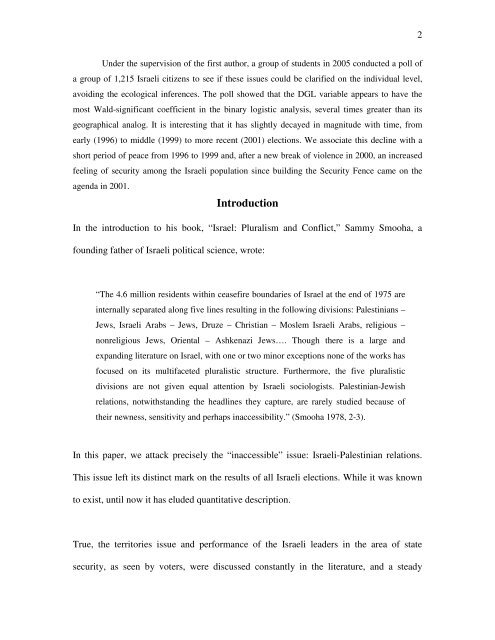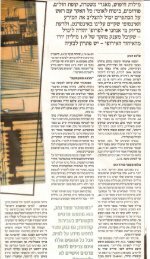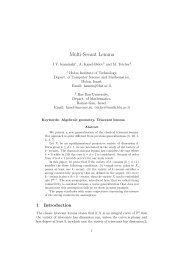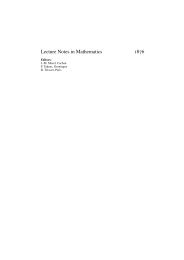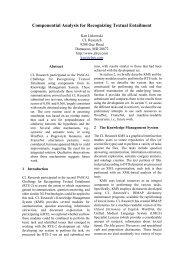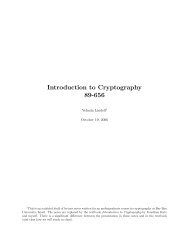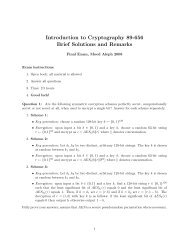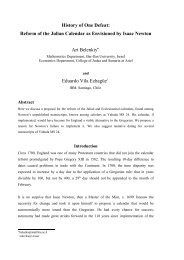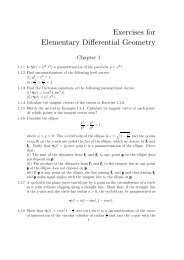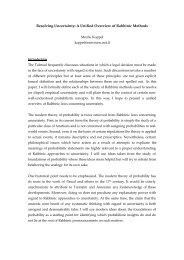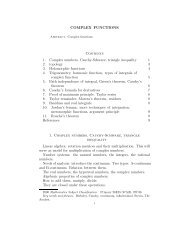The Green Line and the Security Fence:
The Green Line and the Security Fence:
The Green Line and the Security Fence:
You also want an ePaper? Increase the reach of your titles
YUMPU automatically turns print PDFs into web optimized ePapers that Google loves.
2<br />
Under <strong>the</strong> supervision of <strong>the</strong> first author, a group of students in 2005 conducted a poll of<br />
a group of 1,215 Israeli citizens to see if <strong>the</strong>se issues could be clarified on <strong>the</strong> individual level,<br />
avoiding <strong>the</strong> ecological inferences. <strong>The</strong> poll showed that <strong>the</strong> DGL variable appears to have <strong>the</strong><br />
most Wald-significant coefficient in <strong>the</strong> binary logistic analysis, several times greater than its<br />
geographical analog. It is interesting that it has slightly decayed in magnitude with time, from<br />
early (1996) to middle (1999) to more recent (2001) elections. We associate this decline with a<br />
short period of peace from 1996 to 1999 <strong>and</strong>, after a new break of violence in 2000, an increased<br />
feeling of security among <strong>the</strong> Israeli population since building <strong>the</strong> <strong>Security</strong> <strong>Fence</strong> came on <strong>the</strong><br />
agenda in 2001.<br />
Introduction<br />
In <strong>the</strong> introduction to his book, “Israel: Pluralism <strong>and</strong> Conflict,” Sammy Smooha, a<br />
founding fa<strong>the</strong>r of Israeli political science, wrote:<br />
“<strong>The</strong> 4.6 million residents within ceasefire boundaries of Israel at <strong>the</strong> end of 1975 are<br />
internally separated along five lines resulting in <strong>the</strong> following divisions: Palestinians –<br />
Jews, Israeli Arabs – Jews, Druze – Christian – Moslem Israeli Arabs, religious –<br />
nonreligious Jews, Oriental – Ashkenazi Jews…. Though <strong>the</strong>re is a large <strong>and</strong><br />
exp<strong>and</strong>ing literature on Israel, with one or two minor exceptions none of <strong>the</strong> works has<br />
focused on its multifaceted pluralistic structure. Fur<strong>the</strong>rmore, <strong>the</strong> five pluralistic<br />
divisions are not given equal attention by Israeli sociologists. Palestinian-Jewish<br />
relations, notwithst<strong>and</strong>ing <strong>the</strong> headlines <strong>the</strong>y capture, are rarely studied because of<br />
<strong>the</strong>ir newness, sensitivity <strong>and</strong> perhaps inaccessibility.” (Smooha 1978, 2-3).<br />
In this paper, we attack precisely <strong>the</strong> “inaccessible” issue: Israeli-Palestinian relations.<br />
This issue left its distinct mark on <strong>the</strong> results of all Israeli elections. While it was known<br />
to exist, until now it has eluded quantitative description.<br />
True, <strong>the</strong> territories issue <strong>and</strong> performance of <strong>the</strong> Israeli leaders in <strong>the</strong> area of state<br />
security, as seen by voters, were discussed constantly in <strong>the</strong> literature, <strong>and</strong> a steady


